This year and last year truly seem to have been the era of waterless beauty products. Consumers adopted powders, pastes and pucks instead of liquids, with the goal of both minimizing water usage in production (water being an increasingly scarce resource) and making products smaller and lighter so their transportation consumes less fossil fuel. As an added benefit, they take up less space to store and require no preservatives (because bacteria can’t proliferate in the absence of water), plus there’s minimal packaging (no pumps or bottles) and less risk of spillage.
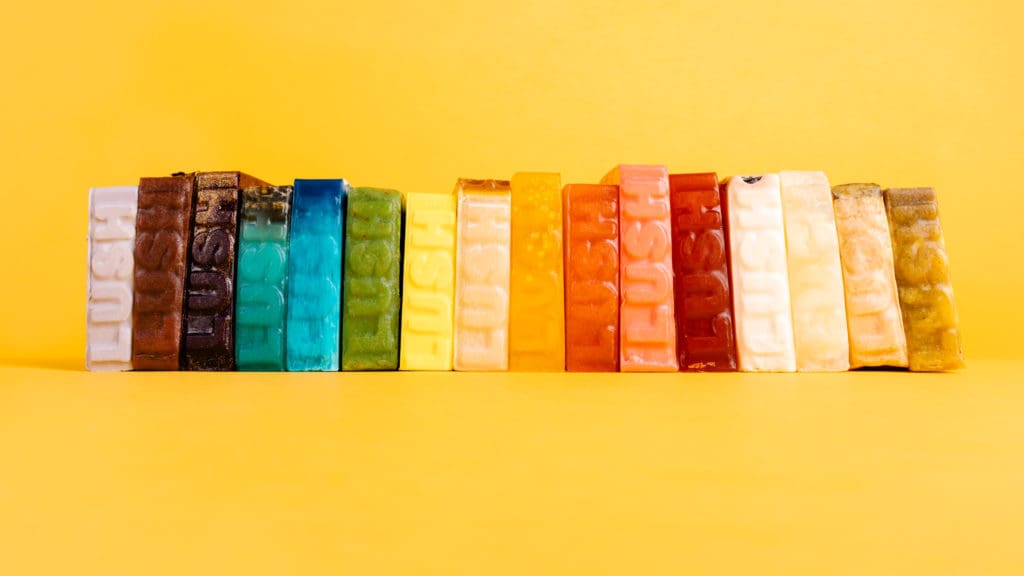
There’s nothing particularly newfangled about waterless beauty products—soap has been around for millennia. “I suppose it was the advent of shower gels that really moved people away from soap,” says Helen Ambrosen, co-founder and product inventor at Lush Cosmetics. “We make beautiful soap though we do also make lovely shower gels. We like soap because it’s antibacterial and deodorizing. If you use soap on your bits and pieces you will get a much better effect than if you use shower gel or liquid soap.” Ambrosen says that soaps are often better for the skin and its microflora because they can be made without preservatives.
Thirty-five ago the brand also created shampoo bars, which are now all the rage. “One of the challenges we have is that we’re quite often ahead of the customers,” says Ambrosen. “It’s taken all those decades for people to get it, but they have now. In 2019, for example, which was really the last normal year, we sold 6.6 million shampoo bars and saved 19 million shampoo bottles from ending up in recycling or landfill.” The brand also has conditioners and body moisturizers in solid formats, plus solid shower gels, which, contrary to popular belief, aren’t just soap (they contain the brand’s shower gel ingredients with an additive to make them solid).
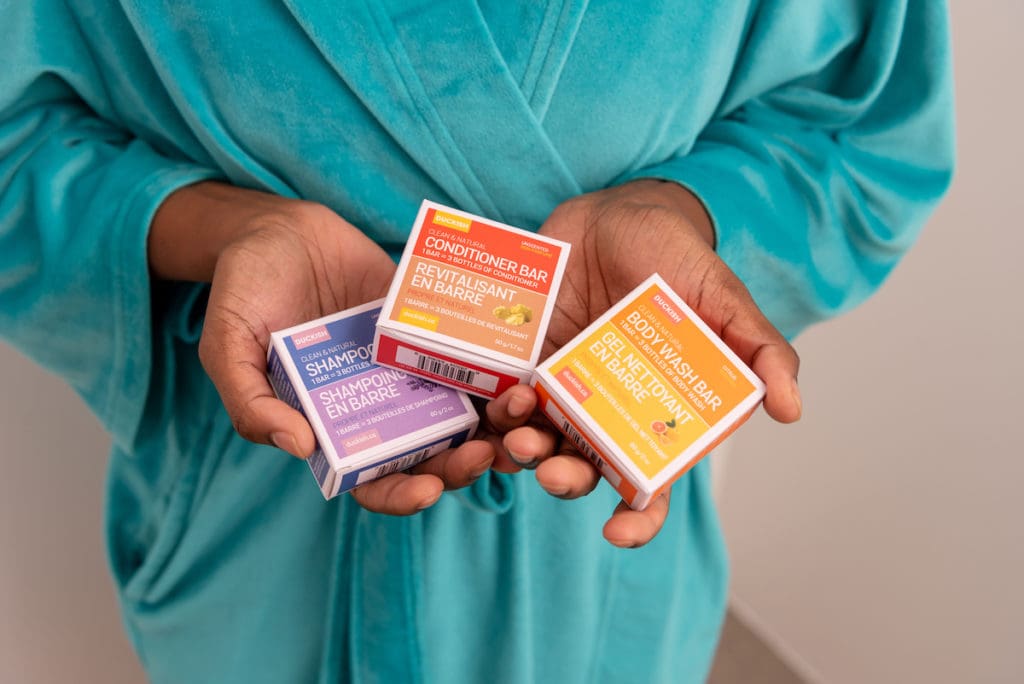
One challenge many people have with solid products like bars is that they go gloopy in the shower—and that’s where powder and paste products come in. In 2019, Toronto’s An-Hydra introduced its Waterless Clay-to-Foam Daily Cleanser, a powder that becomes creamy when mixed with water. Newfoundland-based Duckish does waterless bars, but also moisturizers and diaper cream in sticks.
Right when the pandemic hit, along came Everist, with shampoo and conditioner pastes in recyclable aluminum tubes that offer a similar experience to using a regular liquid hair product, but in a three-times concentrate—so a 100ml tube lasts about as long as a 300ml bottle. “We really wanted to find a formulation that was close to what people were used to and that would offer similar performance” explains Jessica Stevenson, co-founder. “People might come for the eco benefits but they might not stay just for that. So these products are for the people who want to use shampoo bars but can’t get there.”
Her business partner, Jayme Jenkins, says Everist is for imperfect environmentalists. “It needs to be easier to be eco—brands that don’t judge and meet people where they are,” she says. “It’s not about 100 people doing zero waste perfectly, but more like millions and billions doing it imperfectly, without being made to feel like hypocrites.”
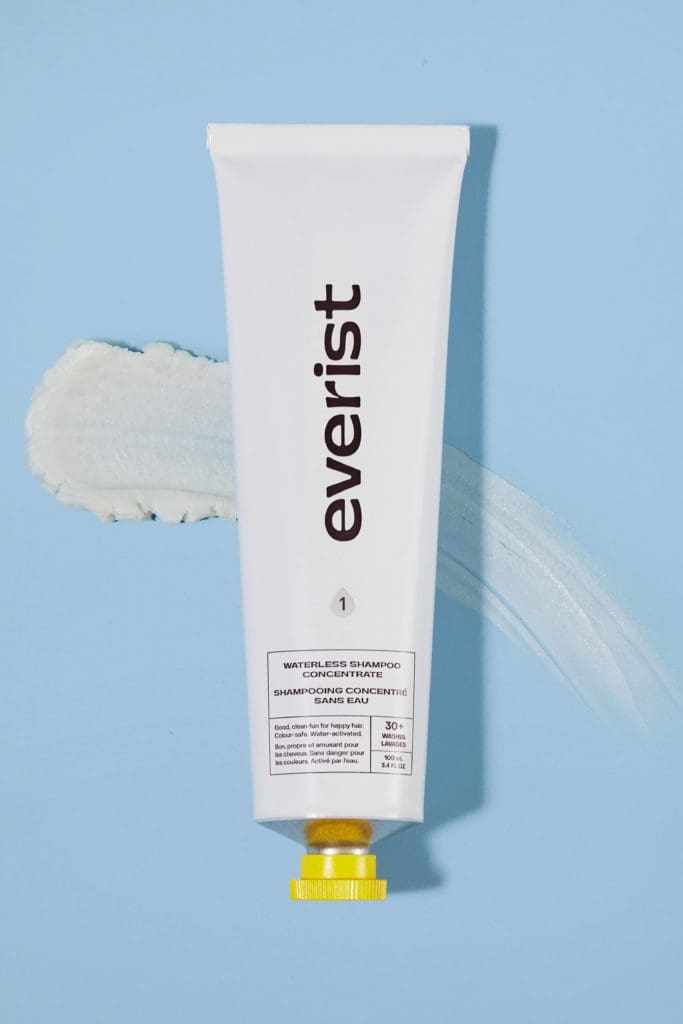
Lush is a well-known name in beauty, and Everist, An-Hydra and Duckish are growing rapidly, though they aren’t massive players (yet). But, perhaps due to the little guys’ success in proving that there is an audience for waterless products, the big brands are starting to make them. And that means they’re becoming more accessible.
Estee Lauder’s Aveda has launched a solid version of its Shampure shampoo for Earth Month and has an ongoing partnership with a non-profit that brings clean and safe drinking water to people in developing countries. KMS, which is owned by the huge Japanese manufacturer Kao, has three different varieties of solid shampoo in its permanent offering, and includes mindful water usage as one of its sustainability principles. L’Oreal Group-owned Kiehl’s has just launched Future Made Better Concentrated Facial Bars. These come in three varieties (for dry, distressed, or oily skin), use five times less water than the brand’s liquid cleansers, are more than 95 per cent biodegradable, and have minimal plastic waste packaging.
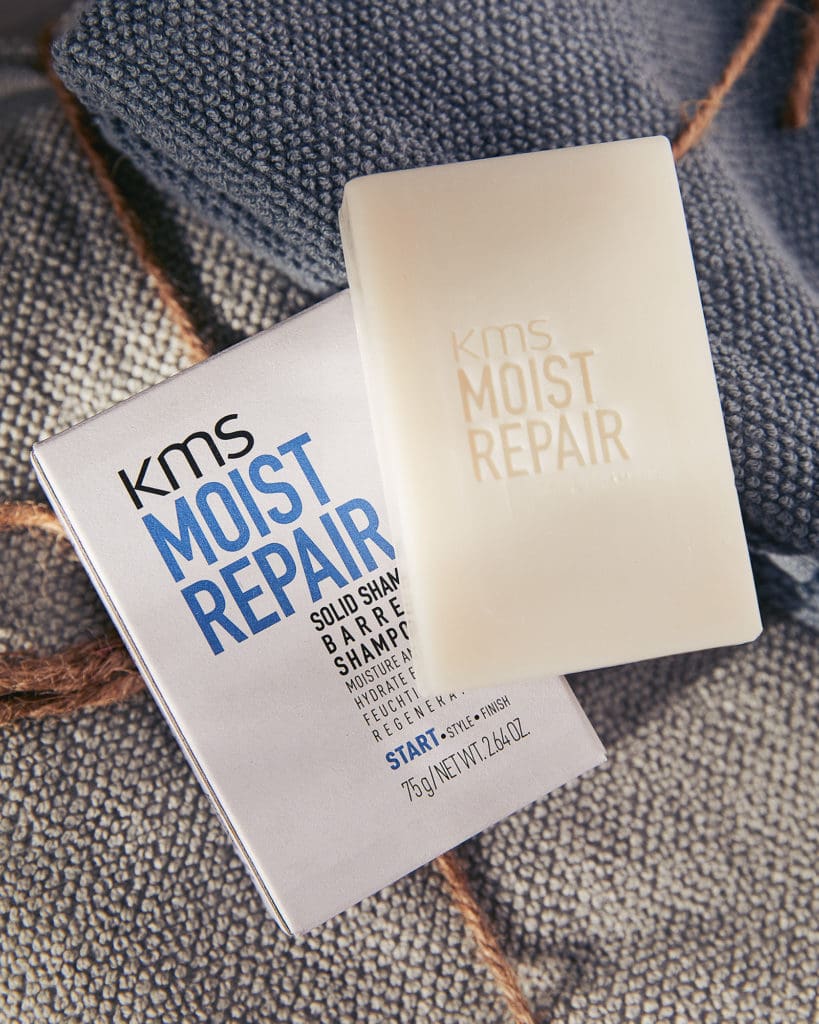
At the mass-market level, L’Oreal Group’s Garnier has a goal of making affordable and accessible beauty products through endeavours like switching to 100 per cent recyclable packaging by 2025—and, now, Whole Blends Shampoo Bars. “Each is made of 95 per cent plant-based ingredients, is 97 per cent biodegradable and provides up to two months of usage, four times longer than the average bottled shampoo,” says Valérie Gagnon, communications manager.
Garnier is also looking to its production processes to see if it can reduce water consumption in manufacturing, an area that isn’t much discussed. “We already have three ‘water-loop’ factories, where 100 per cent of industrial water use [for cleaning and cooling, for example] is re-treated, recycled or reused; we no longer need fresh water for these processes,” says Gagnon. That saves millions of litres of water every year.
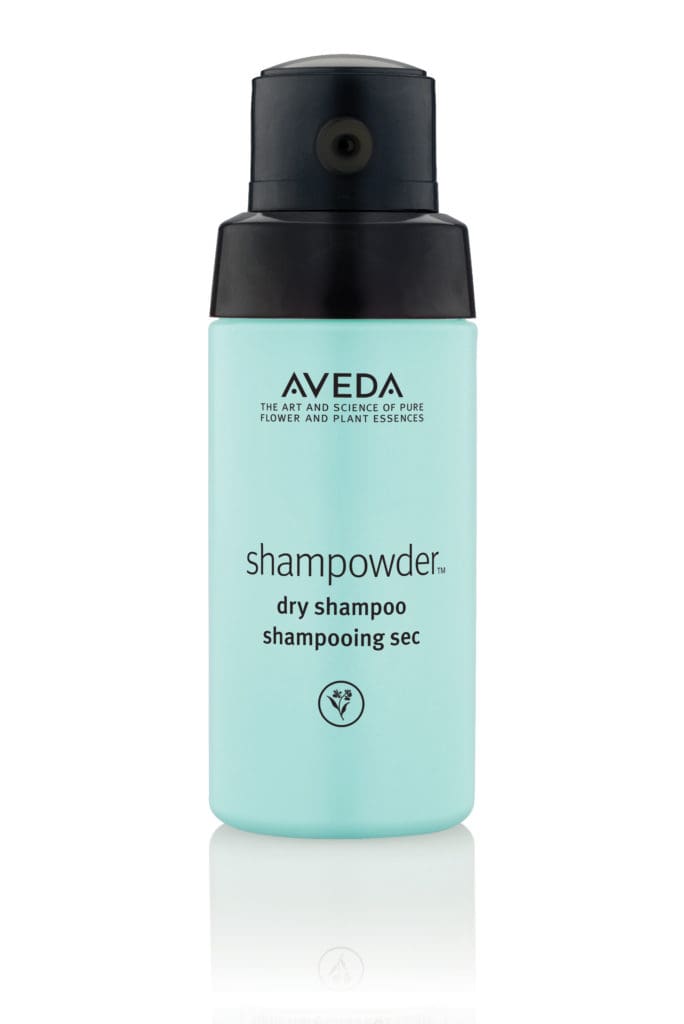
Where can the waterless beauty trend end? Will all our moisturizers and serums eventually all comes as solids for us to mix at home? Probably not, says Jenkins, explaining that, in some circumstances, water is a key part of a formulation that has to be added in precise quantities. “We started with shower products where you can easily add water and there is definitely more space with wash-off formulas where you don’t have to consider mixing ingredients yourself, boiling things and measuring them.”
Ambrosen agrees. Still, she believes the waterless category will expand. “We almost have to give people two things, one with water and one without, and show them that the one without works better for them. Everything depends on quality, value for money and the whole experience. If we can continue to evolve that and expand on it then this part of the industry will absolutely continue to grow.” —Aileen Lalor
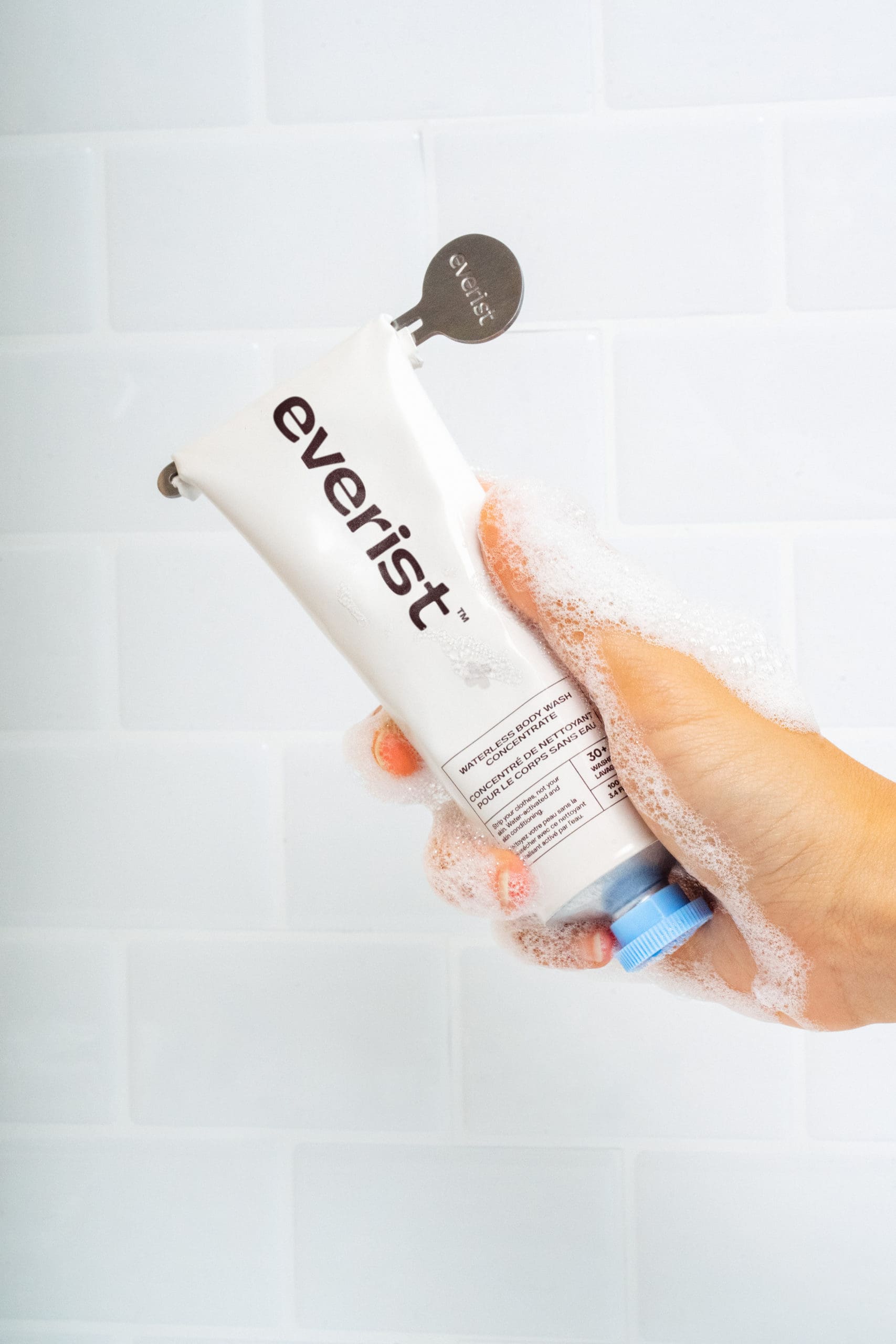
January 22nd, 2025 at 2:02 am
Mexican Easy Pharm: buying prescription drugs in mexico – Mexican Easy Pharm
January 24th, 2025 at 3:35 am
http://semapharm24.com/# cheap semaglutide pills
average cost of prednisone
January 26th, 2025 at 4:41 pm
http://semapharm24.com/# SemaPharm24
canada buy prednisone online
January 30th, 2025 at 6:28 pm
Farmacia online miglior prezzo: Farma Prodotti – migliori farmacie online 2024
January 30th, 2025 at 7:38 pm
viagra online spedizione gratuita: FarmaSildItaly – viagra generico sandoz
migliori farmacie online 2024
January 30th, 2025 at 8:05 pm
http://farmasilditaly.com/# farmacia senza ricetta recensioni
comprare farmaci online all’estero
January 30th, 2025 at 10:53 pm
Visitors come from around the world to play.: phmacao club – phmacao casino
January 31st, 2025 at 12:38 am
jugabet casino jugabet.xyz La mГєsica acompaГ±a la experiencia de juego.
January 31st, 2025 at 2:58 am
Poker rooms host exciting tournaments regularly. https://winchile.pro/# Los casinos ofrecen entretenimiento en vivo.
January 31st, 2025 at 3:43 am
The casino experience is memorable and unique.: taya777 register login – taya777 login
January 31st, 2025 at 7:56 am
Players enjoy both fun and excitement in casinos. https://phtaya.tech/# Casinos often host special holiday promotions.
January 31st, 2025 at 8:35 am
High rollers receive exclusive treatment and bonuses.: taya365 com login – taya365 com login
January 31st, 2025 at 9:11 am
winchile winchile Las ganancias son una gran motivaciГіn.
January 31st, 2025 at 12:50 pm
Live dealer games enhance the casino experience. https://taya365.art/# Resorts provide both gaming and relaxation options.
January 31st, 2025 at 1:25 pm
Game rules can vary between casinos.: taya365 – taya365 com login
January 31st, 2025 at 5:23 pm
phmacao casino phmacao casino The casino atmosphere is thrilling and energetic.
January 31st, 2025 at 5:28 pm
Loyalty programs reward regular customers generously. https://phmacao.life/# Game rules can vary between casinos.
January 31st, 2025 at 5:57 pm
The casino industry supports local economies significantly.: phmacao club – phmacao
January 31st, 2025 at 10:10 pm
Cashless gaming options are becoming popular. https://phmacao.life/# A variety of gaming options cater to everyone.
January 31st, 2025 at 10:36 pm
Promotions are advertised through social media channels.: taya365.art – taya365
February 1st, 2025 at 1:27 am
taya365 login taya365 login Slot machines attract players with big jackpots.
February 1st, 2025 at 2:55 am
Security measures ensure a safe environment. http://phmacao.life/# The gaming floors are always bustling with excitement.
February 1st, 2025 at 3:17 am
Los croupiers son amables y profesionales.: jugabet casino – jugabet
February 1st, 2025 at 7:41 am
Slot tournaments create friendly competitions among players. http://taya365.art/# Casinos offer delicious dining options on-site.
February 1st, 2025 at 7:57 am
Las apuestas deportivas tambiГ©n son populares.: winchile.pro – winchile.pro
February 1st, 2025 at 9:33 am
phtaya casino phtaya login The casino atmosphere is thrilling and energetic.
February 1st, 2025 at 12:30 pm
The ambiance is designed to excite players. http://phmacao.life/# Some casinos have luxurious spa facilities.
February 1st, 2025 at 12:46 pm
The gaming floors are always bustling with excitement.: taya365 login – taya365 login
February 1st, 2025 at 1:47 pm
The gaming floors are always bustling with excitement.: taya365 login – taya365
February 1st, 2025 at 5:23 pm
Casinos offer delicious dining options on-site. https://taya365.art/# Casino visits are a popular tourist attraction.
February 1st, 2025 at 5:35 pm
Some casinos feature themed gaming areas.: taya777 register login – taya777 app
February 1st, 2025 at 5:41 pm
phmacao com phmacao com login Casinos often host special holiday promotions.
February 1st, 2025 at 10:49 pm
The Philippines has several world-class integrated resorts.: phmacao casino – phmacao casino
February 2nd, 2025 at 3:58 am
win chile winchile casino La historia del juego en Chile es rica.
February 2nd, 2025 at 8:37 am
La variedad de juegos es impresionante.: winchile – winchile casino
February 2nd, 2025 at 10:57 am
Slot machines feature various exciting themes. https://taya365.art/# Many casinos offer luxurious amenities and services.
February 2nd, 2025 at 1:41 pm
Los casinos ofrecen entretenimiento en vivo.: jugabet casino – jugabet casino
February 2nd, 2025 at 1:59 pm
jugabet casino jugabet casino Los jugadores deben jugar con responsabilidad.
February 2nd, 2025 at 11:51 pm
phmacao club phmacao Gambling can be a social activity here.
February 3rd, 2025 at 12:01 am
Gambling can be a social activity here.: phtaya casino – phtaya
February 3rd, 2025 at 5:06 am
La Г©tica del juego es esencial.: winchile casino – win chile
February 3rd, 2025 at 7:18 am
Online gaming is also growing in popularity. https://jugabet.xyz/# п»їLos casinos en Chile son muy populares.
February 3rd, 2025 at 9:33 am
phmacao casino phmacao casino Online gaming is also growing in popularity.
February 3rd, 2025 at 7:24 pm
phmacao com phmacao Casinos often host special holiday promotions.
February 3rd, 2025 at 8:09 pm
Gaming regulations are overseen by PAGCOR.: taya777.icu – taya777
February 3rd, 2025 at 10:41 pm
http://phmacao.life/# Some casinos have luxurious spa facilities.
Slot machines feature various exciting themes.
February 4th, 2025 at 1:12 am
Los jackpots progresivos atraen a los jugadores.: winchile – winchile
February 4th, 2025 at 5:12 am
canadian online pharmacy reviews: legal to buy prescription drugs from canada – canadian pharmacies compare
February 4th, 2025 at 5:31 am
pharmacy discount coupons https://easycanadianpharm.com/# easy canadian pharm
February 4th, 2025 at 6:58 am
buy medicines online in india MegaIndiaPharm MegaIndiaPharm
February 4th, 2025 at 10:11 am
xxl mexican pharm: xxl mexican pharm – xxl mexican pharm
February 4th, 2025 at 10:38 am
pharmacy discount coupons http://discountdrugmart.pro/# discount drugs
February 4th, 2025 at 2:59 pm
international pharmacy no prescription: Cheapest online pharmacy – pharmacy discount coupons
February 4th, 2025 at 3:32 pm
family pharmacy Best online pharmacy Online pharmacy USA
February 4th, 2025 at 9:05 pm
pharmacy coupons http://easycanadianpharm.com/# easy canadian pharm
February 5th, 2025 at 1:43 am
MegaIndiaPharm Mega India Pharm MegaIndiaPharm
February 5th, 2025 at 1:58 am
family pharmacy: Best online pharmacy – online pharmacy no prescription needed
February 5th, 2025 at 2:55 am
best online pharmacy no prescription http://megaindiapharm.com/# MegaIndiaPharm
February 5th, 2025 at 7:55 am
canadian pharmacies: easy canadian pharm – easy canadian pharm
February 5th, 2025 at 8:55 am
overseas pharmacy no prescription https://xxlmexicanpharm.com/# best online pharmacies in mexico
February 5th, 2025 at 12:37 pm
medication from mexico pharmacy xxl mexican pharm best online pharmacies in mexico
February 5th, 2025 at 1:43 pm
Best online pharmacy: family pharmacy – family pharmacy
February 5th, 2025 at 7:32 pm
MegaIndiaPharm: MegaIndiaPharm – MegaIndiaPharm
February 5th, 2025 at 8:50 pm
online pharmacy discount code https://familypharmacy.company/# Cheapest online pharmacy
February 5th, 2025 at 11:24 pm
family pharmacy Online pharmacy USA Online pharmacy USA
February 6th, 2025 at 1:00 am
pharmacy no prescription required https://familypharmacy.company/# online pharmacy delivery usa
February 6th, 2025 at 1:24 am
drugmart: drug mart – discount drug mart
February 6th, 2025 at 8:56 am
no prescription needed canadian pharmacy https://easycanadianpharm.com/# canada pharmacy world
February 6th, 2025 at 10:11 am
online pharmacy delivery usa online pharmacy delivery usa Best online pharmacy
February 6th, 2025 at 1:30 pm
easy canadian pharm: safe canadian pharmacy – canadian pharmacy reviews
February 6th, 2025 at 2:58 pm
promo code for canadian pharmacy meds https://megaindiapharm.com/# Online medicine order
February 6th, 2025 at 7:08 pm
easy canadian pharm: canadian pharmacy online – easy canadian pharm
February 6th, 2025 at 8:52 pm
family pharmacy Best online pharmacy online pharmacy delivery usa
February 7th, 2025 at 12:38 am
drug mart: drug mart – discount drug mart pharmacy
February 7th, 2025 at 2:14 am
no prescription required pharmacy https://xxlmexicanpharm.com/# xxl mexican pharm
February 7th, 2025 at 6:14 am
canadian pharmacy ltd: easy canadian pharm – easy canadian pharm
February 7th, 2025 at 7:32 am
xxl mexican pharm mexican rx online mexico drug stores pharmacies
February 7th, 2025 at 7:55 am
no prescription pharmacy paypal http://easycanadianpharm.com/# easy canadian pharm
February 7th, 2025 at 11:52 am
canadian online pharmacy no prescription https://megaindiapharm.com/# MegaIndiaPharm
February 7th, 2025 at 12:03 pm
MegaIndiaPharm: indianpharmacy com – best online pharmacy india
February 7th, 2025 at 1:50 pm
online pharmacy discount code https://easycanadianpharm.shop/# maple leaf pharmacy in canada
February 7th, 2025 at 4:17 pm
international pharmacy no prescription https://megaindiapharm.com/# mail order pharmacy india
February 7th, 2025 at 6:26 pm
easy canadian pharm easy canadian pharm easy canadian pharm
February 7th, 2025 at 7:38 pm
canadian pharmacy world coupon code https://discountdrugmart.pro/# discount drug mart pharmacy
February 7th, 2025 at 11:23 pm
canadian pharmacy 24 com: legitimate canadian pharmacy online – onlinecanadianpharmacy
February 8th, 2025 at 1:25 am
canadian pharmacy no prescription https://easycanadianpharm.com/# best online canadian pharmacy
February 8th, 2025 at 5:01 am
MegaIndiaPharm MegaIndiaPharm Mega India Pharm
February 8th, 2025 at 6:52 am
canada drugs coupon code https://easycanadianpharm.shop/# easy canadian pharm
February 8th, 2025 at 11:26 am
rxpharmacycoupons http://easycanadianpharm.com/# easy canadian pharm
February 8th, 2025 at 3:35 pm
buying from online mexican pharmacy mexican border pharmacies shipping to usa mexico drug stores pharmacies
February 8th, 2025 at 3:59 pm
best online pharmacy no prescription http://familypharmacy.company/# Online pharmacy USA
February 9th, 2025 at 1:59 am
Slot menawarkan berbagai jenis permainan bonus https://bonaslot.site/# Mesin slot digital semakin banyak diminati
February 9th, 2025 at 2:03 am
Kasino sering mengadakan turnamen slot menarik: BonaSlot – BonaSlot
February 9th, 2025 at 2:19 am
preman69 preman69 Slot modern memiliki grafik yang mengesankan
February 9th, 2025 at 5:34 am
https://bonaslot.site/# Permainan slot mudah dipahami dan menyenangkan
February 9th, 2025 at 6:59 am
Permainan slot mudah dipahami dan menyenangkan https://bonaslot.site/# Mesin slot sering diperbarui dengan game baru
February 9th, 2025 at 10:18 am
https://garuda888.top/# Bermain slot bisa menjadi pengalaman sosial
February 9th, 2025 at 10:41 am
BonaSlot bonaslot.site п»їKasino di Indonesia sangat populer di kalangan wisatawan
February 9th, 2025 at 11:49 am
Kasino sering memberikan hadiah untuk pemain setia https://slot88.company/# п»їKasino di Indonesia sangat populer di kalangan wisatawan
February 9th, 2025 at 2:25 pm
http://slot88.company/# Jackpot besar bisa mengubah hidup seseorang
February 9th, 2025 at 6:10 pm
preman69 slot preman69.tech Banyak pemain menikmati jackpot harian di slot
February 9th, 2025 at 6:41 pm
http://bonaslot.site/# Banyak kasino memiliki program loyalitas untuk pemain
February 9th, 2025 at 11:14 pm
https://slotdemo.auction/# Pemain harus memahami aturan masing-masing mesin
February 9th, 2025 at 11:23 pm
Kasino di Jakarta memiliki berbagai pilihan permainan http://bonaslot.site/# Slot dengan fitur interaktif semakin banyak tersedia
February 10th, 2025 at 3:38 am
bonaslot bonaslot.site Mesin slot digital semakin banyak diminati
February 10th, 2025 at 4:38 am
https://preman69.tech/# Banyak pemain berusaha untuk mendapatkan jackpot
February 10th, 2025 at 10:03 am
http://slot88.company/# Mesin slot menawarkan pengalaman bermain yang cepat
February 10th, 2025 at 2:19 pm
slot88 slot 88 Pemain bisa menikmati slot dari kenyamanan rumah
February 10th, 2025 at 2:51 pm
http://slot88.company/# Mesin slot menawarkan pengalaman bermain yang cepat
February 10th, 2025 at 4:48 pm
Pemain harus menetapkan batas saat bermain https://bonaslot.site/# Slot modern memiliki grafik yang mengesankan
February 10th, 2025 at 7:23 pm
http://bonaslot.site/# Pemain sering mencoba berbagai jenis slot
February 10th, 2025 at 11:54 pm
http://slotdemo.auction/# Kasino sering memberikan hadiah untuk pemain setia
February 11th, 2025 at 4:37 am
https://bonaslot.site/# Slot dengan tema film terkenal menarik banyak perhatian
February 11th, 2025 at 5:00 am
Mesin slot baru selalu menarik minat http://slot88.company/# Kasino sering mengadakan turnamen slot menarik
February 11th, 2025 at 9:16 am
https://preman69.tech/# Pemain bisa menikmati slot dari kenyamanan rumah
February 11th, 2025 at 11:47 am
garuda888 slot garuda888.top Kasino di Indonesia menyediakan hiburan yang beragam
February 11th, 2025 at 1:57 pm
https://bonaslot.site/# Mesin slot menawarkan pengalaman bermain yang cepat
February 11th, 2025 at 6:32 pm
http://preman69.tech/# Banyak kasino memiliki promosi untuk slot
February 11th, 2025 at 11:06 pm
http://preman69.tech/# Slot menjadi daya tarik utama di kasino
February 12th, 2025 at 3:45 am
https://garuda888.top/# Mesin slot dapat dimainkan dalam berbagai bahasa
February 12th, 2025 at 9:00 am
BonaSlot bonaslot Slot dengan pembayaran tinggi selalu diminati
February 12th, 2025 at 5:40 pm
http://slot88.company/# Kasino memiliki suasana yang energik dan menyenangkan
February 12th, 2025 at 7:53 pm
slot demo gratis slot demo Banyak pemain menikmati jackpot harian di slot
February 12th, 2025 at 8:27 pm
Permainan slot mudah dipahami dan menyenangkan https://garuda888.top/# Kasino menyediakan layanan pelanggan yang baik
February 13th, 2025 at 4:18 am
http://bonaslot.site/# Kasino menawarkan pengalaman bermain yang seru
February 13th, 2025 at 6:05 am
slot88.company slot88 Slot dengan tema budaya lokal menarik perhatian
February 13th, 2025 at 8:44 am
amoxicillin azithromycin: Amo Health Pharm – buy amoxicillin online cheap
February 13th, 2025 at 10:39 am
http://doxhealthpharm.com/# buy online doxycycline without prescription
February 13th, 2025 at 2:02 pm
can you buy clomid without insurance: ClmHealthPharm – buy generic clomid without dr prescription
February 13th, 2025 at 3:43 pm
http://clmhealthpharm.com/# clomid otc
February 13th, 2025 at 4:08 pm
doxycycline 40 mg generic cost Dox Health Pharm can you buy doxycycline over the counter australia
February 13th, 2025 at 7:14 pm
cheapest doxycycline without prescrtiption: doxycycline online cheap – doxycycline drug
February 13th, 2025 at 8:46 pm
http://clmhealthpharm.com/# where to buy generic clomid without dr prescription
February 14th, 2025 at 1:01 am
doxycycline 100mg tablet brand name: Dox Health Pharm – purchase doxycycline
February 14th, 2025 at 1:53 am
zithromax 250 mg tablet price Zithro Pharm zithromax price south africa
February 14th, 2025 at 2:32 am
https://clmhealthpharm.shop/# where can i buy generic clomid without dr prescription
February 14th, 2025 at 4:32 am
amoxicillin order online: AmoHealthPharm – amoxicillin 500mg capsules antibiotic
February 14th, 2025 at 7:11 am
where can i buy generic clomid without a prescription: ClmHealthPharm – can i order clomid
February 14th, 2025 at 8:39 am
http://zithropharm.com/# where can i buy zithromax medicine
February 14th, 2025 at 12:57 pm
doxycycline prescription online DoxHealthPharm buy doxycycline for dogs
February 14th, 2025 at 1:24 pm
amoxicillin over counter: price of amoxicillin without insurance – amoxicillin 500 mg where to buy
February 14th, 2025 at 2:39 pm
https://zithropharm.shop/# zithromax online
February 14th, 2025 at 8:29 pm
http://amohealthpharm.com/# amoxil generic
February 14th, 2025 at 11:37 pm
can you get clomid now ClmHealthPharm can i purchase generic clomid online
February 15th, 2025 at 1:20 am
cost cheap clomid without insurance: clomid without insurance – buying clomid
February 15th, 2025 at 2:14 am
https://doxhealthpharm.com/# doxycycline medication cost
February 15th, 2025 at 7:24 am
can i buy zithromax over the counter in canada: ZithroPharm – azithromycin zithromax
February 15th, 2025 at 8:10 am
http://clmhealthpharm.com/# cheap clomid price
February 15th, 2025 at 11:58 am
order amoxicillin no prescription: Amo Health Pharm – amoxicillin 500mg pill
February 15th, 2025 at 7:44 pm
where can i get zithromax: ZithroPharm – zithromax online usa
February 15th, 2025 at 8:08 pm
http://clmhealthpharm.com/# can i buy clomid online
February 15th, 2025 at 9:17 pm
generic zithromax 500mg ZithroPharm can you buy zithromax over the counter in canada
February 16th, 2025 at 1:57 am
zithromax coupon: buy generic zithromax no prescription – zithromax purchase online
February 16th, 2025 at 2:09 am
https://doxhealthpharm.com/# buy 40 mg doxycycline
February 16th, 2025 at 8:27 am
pharmacie en ligne france livraison belgique http://viagrameilleurprix.com/# Acheter Sildenafil 100mg sans ordonnance
February 16th, 2025 at 8:38 am
vente de mГ©dicament en ligne cialis generique pharmacie en ligne avec ordonnance
February 16th, 2025 at 9:09 am
pharmacies en ligne certifiГ©es: cialis sans ordonnance – pharmacie en ligne france pas cher
February 16th, 2025 at 1:06 pm
pharmacie en ligne france pas cher https://kamagrameilleurprix.shop/# pharmacie en ligne livraison europe
February 16th, 2025 at 4:39 pm
vente de mГ©dicament en ligne kamagra livraison 24h pharmacie en ligne fiable
February 16th, 2025 at 5:42 pm
Pharmacie Internationale en ligne https://pharmaciemeilleurprix.shop/# pharmacie en ligne france livraison internationale
February 16th, 2025 at 6:45 pm
https://viagrameilleurprix.com/# Viagra vente libre allemagne
pharmacie en ligne livraison europe
February 16th, 2025 at 10:53 pm
Achat mГ©dicament en ligne fiable http://kamagrameilleurprix.com/# pharmacie en ligne france livraison belgique
February 17th, 2025 at 12:57 am
pharmacie en ligne sans ordonnance: pharmacie en ligne france – acheter mГ©dicament en ligne sans ordonnance
February 17th, 2025 at 4:35 am
pharmacie en ligne france pas cher https://viagrameilleurprix.com/# Viagra sans ordonnance livraison 24h
February 17th, 2025 at 9:19 am
vente de mГ©dicament en ligne: kamagra livraison 24h – pharmacie en ligne france pas cher
February 17th, 2025 at 10:27 am
pharmacie en ligne france livraison internationale http://kamagrameilleurprix.com/# pharmacie en ligne france livraison belgique
February 17th, 2025 at 12:04 pm
Pharmacie Internationale en ligne: kamagra pas cher – vente de mГ©dicament en ligne
February 17th, 2025 at 12:42 pm
Pharmacie en ligne livraison Europe pharmacie en ligne sans ordonnance Pharmacie en ligne livraison Europe
February 17th, 2025 at 4:24 pm
Achat mГ©dicament en ligne fiable https://tadalafilmeilleurprix.com/# pharmacie en ligne france livraison internationale
February 17th, 2025 at 11:20 pm
pharmacie en ligne france pas cher kamagra oral jelly vente de mГ©dicament en ligne
February 18th, 2025 at 6:09 am
vente de mГ©dicament en ligne: pharmacie en ligne sans ordonnance – pharmacie en ligne france livraison belgique
February 18th, 2025 at 9:55 am
Viagra gГ©nГ©rique sans ordonnance en pharmacie: Viagra homme sans prescription – Viagra Pfizer sans ordonnance
February 18th, 2025 at 10:15 am
pharmacie en ligne fiable https://viagrameilleurprix.shop/# Viagra gГ©nГ©rique sans ordonnance en pharmacie
February 18th, 2025 at 12:14 pm
Viagra 100 mg sans ordonnance: acheter du viagra – Viagra pas cher inde
February 18th, 2025 at 4:11 pm
pharmacie en ligne livraison europe http://tadalafilmeilleurprix.com/# trouver un mГ©dicament en pharmacie
February 18th, 2025 at 6:20 pm
pharmacie en ligne sans ordonnance: pharmacie en ligne france – Pharmacie en ligne livraison Europe
February 18th, 2025 at 8:32 pm
Viagra prix pharmacie paris Viagra gГ©nГ©rique sans ordonnance en pharmacie Viagra sans ordonnance livraison 24h
February 18th, 2025 at 10:11 pm
pharmacie en ligne france livraison belgique: pharmacie en ligne sans ordonnance – п»їpharmacie en ligne france
February 19th, 2025 at 12:23 am
vente de mГ©dicament en ligne: kamagra livraison 24h – pharmacie en ligne livraison europe
February 19th, 2025 at 2:12 am
Viagra homme sans prescription: acheter du viagra – Viagra pas cher livraison rapide france
February 19th, 2025 at 4:25 am
pharmacie en ligne france pas cher http://tadalafilmeilleurprix.com/# pharmacie en ligne pas cher
February 19th, 2025 at 8:11 am
Sildenafil teva 100 mg sans ordonnance Viagra pharmacie Viagra pas cher inde
February 19th, 2025 at 11:46 am
pharmacie en ligne avec ordonnance http://viagrameilleurprix.com/# Viagra pas cher livraison rapide france
February 19th, 2025 at 2:50 pm
Pharmacie en ligne livraison Europe: acheter kamagra site fiable – Pharmacie en ligne livraison Europe
February 19th, 2025 at 7:09 pm
pharmacie en ligne france livraison belgique http://tadalafilmeilleurprix.com/# pharmacie en ligne pas cher
February 19th, 2025 at 9:08 pm
pharmacie en ligne france livraison internationale Acheter Cialis Achat mГ©dicament en ligne fiable
February 19th, 2025 at 10:24 pm
Pharmacie sans ordonnance: pharmacie en ligne pas cher – pharmacie en ligne france fiable
February 20th, 2025 at 2:30 am
vente de mГ©dicament en ligne https://kamagrameilleurprix.com/# acheter mГ©dicament en ligne sans ordonnance
February 20th, 2025 at 6:05 am
pharmacie en ligne avec ordonnance: pharmacie en ligne – pharmacies en ligne certifiГ©es
February 20th, 2025 at 9:46 am
acheter mГ©dicament en ligne sans ordonnance https://pharmaciemeilleurprix.shop/# pharmacie en ligne
February 20th, 2025 at 9:55 am
Pharmacie sans ordonnance pharmacie en ligne acheter mГ©dicament en ligne sans ordonnance
February 20th, 2025 at 3:15 pm
Achat mГ©dicament en ligne fiable: Pharmacies en ligne certifiees – pharmacie en ligne fiable
February 20th, 2025 at 4:27 pm
pharmacie en ligne france pas cher https://tadalafilmeilleurprix.shop/# Pharmacie Internationale en ligne
February 20th, 2025 at 9:02 pm
SildГ©nafil 100mg pharmacie en ligne Viagra pharmacie п»їViagra sans ordonnance 24h
February 21st, 2025 at 12:21 am
pharmacie en ligne france pas cher: pharmacie en ligne – acheter mГ©dicament en ligne sans ordonnance
February 21st, 2025 at 5:24 am
pharmacie en ligne https://viagrameilleurprix.shop/# SildГ©nafil 100mg pharmacie en ligne
February 21st, 2025 at 9:17 am
acheter mГ©dicament en ligne sans ordonnance pharmacie en ligne avec ordonnance pharmacie en ligne fiable
February 21st, 2025 at 12:32 pm
pharmacie en ligne france livraison belgique: cialis sans ordonnance – pharmacie en ligne sans ordonnance
February 21st, 2025 at 7:04 pm
pharmacie en ligne avec ordonnance: pharmacie en ligne sans ordonnance – pharmacie en ligne avec ordonnance
February 21st, 2025 at 8:09 pm
Achat mГ©dicament en ligne fiable Cialis sans ordonnance 24h pharmacie en ligne france livraison belgique
February 21st, 2025 at 11:58 pm
pharmacie en ligne fiable http://tadalafilmeilleurprix.com/# acheter mГ©dicament en ligne sans ordonnance
February 22nd, 2025 at 5:15 am
Pharmacie Internationale en ligne http://tadalafilmeilleurprix.com/# п»їpharmacie en ligne france
February 22nd, 2025 at 6:04 am
Achat mГ©dicament en ligne fiable Achat mГ©dicament en ligne fiable pharmacie en ligne livraison europe
February 22nd, 2025 at 10:32 am
pharmacie en ligne https://tadalafilmeilleurprix.shop/# pharmacie en ligne france pas cher
February 22nd, 2025 at 3:42 pm
pharmacie en ligne livraison europe https://tadalafilmeilleurprix.shop/# pharmacie en ligne livraison europe
February 22nd, 2025 at 3:47 pm
pharmacie en ligne sans ordonnance cialis generique pharmacie en ligne france fiable
February 22nd, 2025 at 8:59 pm
pharmacie en ligne avec ordonnance https://pharmaciemeilleurprix.shop/# pharmacie en ligne france livraison internationale
February 23rd, 2025 at 9:48 am
vente de mГ©dicament en ligne: cialis generique – vente de mГ©dicament en ligne
February 23rd, 2025 at 11:57 am
vente de mГ©dicament en ligne pharmacie en ligne france livraison internationale pharmacie en ligne france fiable
February 23rd, 2025 at 2:44 pm
vente de mГ©dicament en ligne https://tadalafilmeilleurprix.com/# pharmacie en ligne avec ordonnance
February 23rd, 2025 at 5:30 pm
п»їpharmacie en ligne france: Cialis sans ordonnance 24h – pharmacie en ligne france pas cher